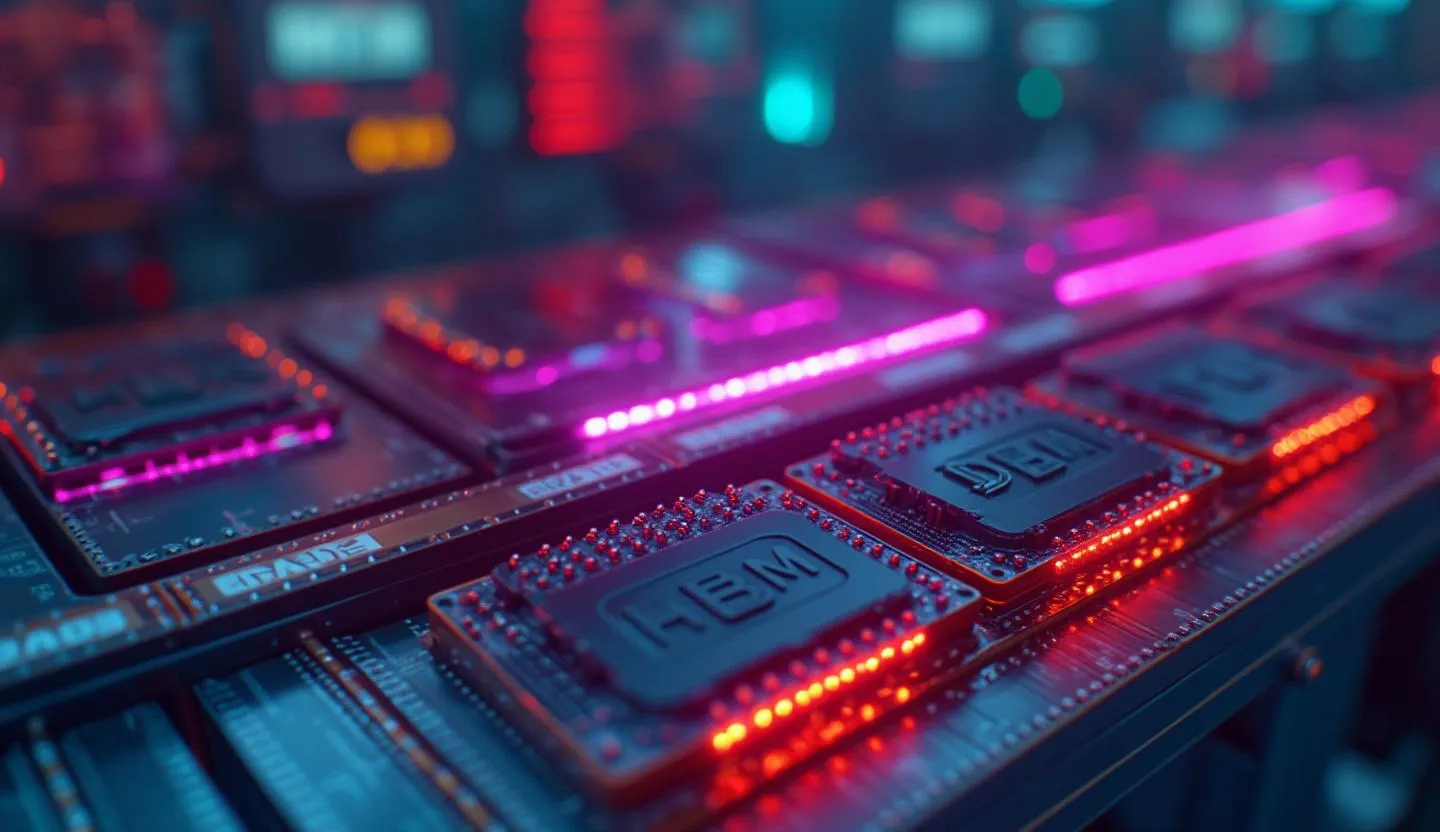Market Volatility Hits a Tech Bellwether: What’s Behind the Slide in Memory Giant?
The technology sector is no stranger to volatility, but today’s market action has placed a spotlight squarely on Micron Technology, Inc. (MU), a global leader in memory and storage solutions. After rallying near its 52-week high on artificial intelligence (AI) optimism and strong year-to-date gains, Micron was abruptly one of the session’s most notable decliners, falling -4.84% to $115.78 on volume topping 21.7 million shares—significantly above recent averages. This sharp reversal in a sector bellwether has investors questioning both the immediate catalysts and the broader implications for tech.
Micron stands at the center of the AI and data center revolutions, supplying high-bandwidth memory (HBM), DRAM, and NAND chips to major device makers and hyperscale cloud providers. Its products are essential to the ongoing transformation in data processing and storage, making any pronounced move in its shares particularly consequential for sector sentiment. Today’s selloff is especially notable given Micron’s recent inclusion on analyst strong buy lists and its status as one of the year’s best technology performers—until now.
Key Takeaways
Sharp Intraday Decline: Micron fell -4.84% ($115.78) with over 21.7 million shares traded, reversing a strong YTD run.
Catalyst: Geopolitics & Competition: News broke of U.S. government intervention in rival Intel, raising competitive and policy uncertainties.
Mixed Analyst Signals: Despite today’s drop, Micron was freshly added to Zacks’ Strong Buy list, underscoring persistent long-term optimism.
AI & HBM Growth Narrative Remains: The longer-term investment case is bolstered by AI-driven demand for high-bandwidth memory, though near-term volatility is now pronounced.
Micron’s Business Model: At the Crossroads of AI and Memory
Micron Technology is a foundational supplier to the digital economy, manufacturing DRAM, NAND, and HBM chips for everything from smartphones and PCs to cloud servers and autonomous vehicles. The company’s fortunes are closely tied to secular trends in AI, edge computing, and the proliferation of data-intensive applications. After a challenging period marked by cyclical oversupply and pricing pressures, Micron has benefited from a sharp rebound in demand for advanced memory—especially HBM, which is critical for AI accelerators.
The AI Gold Rush and HBM Leadership
In 2025, Micron’s narrative has revolved around its strategic pivot to high-performance memory. As Zacks Investment Research notes:
"MU trades near its 52-week high and rallies 45% YTD as AI demand, HBM growth and a discounted valuation support a buy strategy."
Micron’s competitive edge in HBM has made it a core beneficiary of the AI infrastructure build-out, a fact that has drawn significant institutional capital and bullish analyst coverage throughout the year.
Performance in Focus: From 52-Week Highs to a Sudden Reversal
Recent Momentum and Today’s Pullback
Previous Close: $122.05
Current Price: $115.78 (as of latest session)
Change: -4.84%
Volume: 21,729,397 shares
This abrupt move lower comes after a period of significant outperformance: Micron was up over 45% YTD, handily beating broad tech and semiconductor indices. The rally was fueled by both cyclical recovery and the strategic narrative around AI, with investors piling in on expectations of multi-year demand for HBM and advanced DRAM.
However, momentum stocks are highly sensitive to shifts in sentiment, and today’s action underscores that dynamic. The elevated volume suggests institutional rotation or stop-loss triggers, amplifying the magnitude of the decline.
Analyst and Market Sentiment: Contradictory Signals Amid Turbulence
Fresh Upgrades vs. Geopolitical Uncertainty
Even as the stock sold off, Zacks Investment Research reaffirmed Micron as a top pick, adding it to their Strong Buy list:
"MU, FUTU, RL, MSBHF and MITSY have been added to the Zacks Rank #1 (Strong Buy) List on August 20, 2025."
This bullish analyst action reflects confidence in Micron’s long-term positioning, particularly as AI and cloud spending remain robust. Yet, today’s sharp reversal was triggered by a Bloomberg report that the U.S. government is considering taking an equity stake in Intel, a key rival in advanced memory and semiconductors. As The Motley Fool summarized:
"President Trump is planning to take an equity stake in Intel (INTC)."
The specter of Washington picking winners and losers in the chip space injects new uncertainty—potentially reshaping the competitive landscape and investor risk calculus.
Broader Sector Turbulence and Policy Risks
The Geopolitical Overhang
The semiconductor sector is acutely sensitive to government policy, tariffs, and export restrictions. Today’s news that the U.S. may directly intervene in Intel raises concerns about increased government influence, possible favoritism, and new headwinds for rivals like Micron. The lack of clarity around the policy’s specifics has fueled uncertainty and risk-off trading.
High Expectations Meet New Volatility
Micron’s recent run-up left shares priced for perfection, with much of the near-term AI and HBM optimism seemingly baked in. The abrupt shift in policy risk has acted as a catalyst for profit-taking and a reassessment of sector valuations. The heavy trading volume and steep price decline suggest that short-term traders and some institutions are de-risking, while longer-term analysts remain constructive.
Conclusion: A Sector Bellwether at an Inflection Point
Micron’s sudden reversal is a reminder of the volatility that can strike even the most promising sector leaders. While the core drivers—AI demand, HBM leadership, and secular memory growth—remain intact, the introduction of new policy risks and competitive uncertainties has shifted near-term sentiment. For sophisticated investors, today’s action underscores the importance of balancing long-term conviction with an acute awareness of headline risk.
Micron’s outsized role in the tech supply chain means its performance will continue to serve as a barometer for the broader semiconductor sector. Whether today’s selloff marks a short-term overreaction or the start of a deeper re-rating will depend on the evolution of government policy and the company’s ability to maintain its technological edge. For now, the stock’s sharp move lower stands as both a warning and an opportunity in a market where narratives can shift in an instant.

.svg)
.svg)
.svg)
.svg)

.svg)

.svg)
















